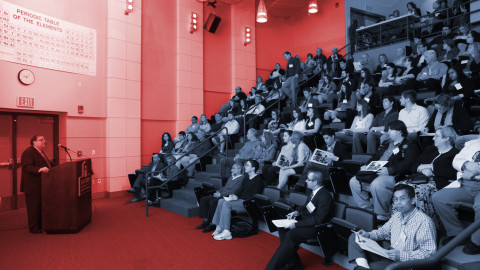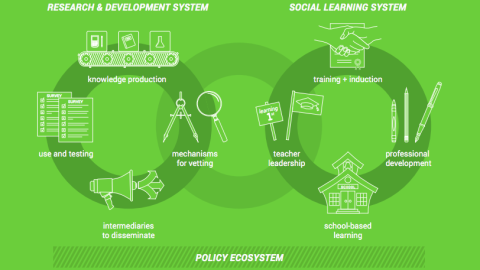We welcome your submission!
Submission Guidelines
We publish pieces in the range of 700-1200 words that examine at least 1 of the 12 “design challenges” below. We also welcome pieces that highlight work you and/or your organization are doing related to 1 or more of the design challenges. The piece should contain a brief summary of your idea (no more than 100 words). Final drafts should be submitted in the form of a Word document or in the body of an email.
Writing Style
Transforming Teaching is interested in publishing pieces that are creative, civil, thought provoking, and accessible to an interdisciplinary audience of thoughtful educators. The first paragraph should get right to the point. Subsequent paragraphs should be brief and organized by sharp topic sentences. Sentences should be short and active. If you use names, dates, and places in your piece, double-check all facts and spelling. If you cite research, include the title, author, and source in the body of your article. No footnotes. Use one space between sentences. Articles will be edited for length, grammar, and style.
Author bio
Authors should submit a personal photo and brief bio to accompany their article (no more than 75 words). Bios can include the author’s position, city, organization, and connection to the region. We are happy to include links to author’s blogs, books, twitter, linkedin, or affiliate organizations.
Rights
While we are open to making exceptions, we normally reserve all rights to all original work that we have published for one year, in all media. No full-text reproductions of an article may appear online, in print, or in any other media without the written permission of the editor. Individuals who would like to republish an article elsewhere should send their brief request to the editor. We may consider cross-publication agreements; those details will be worked out on a case-by-case basis. We are not obligated to publish any article, including articles we have commissioned.
Design Challenges
[DO NOT CITE WITHOUT PERMISSION – AUGUST 2015]
By Jal Mehta, Victoria Theisen-Homer, David Braslow, and Adina Lopatin, in consultation with Robert Ettinger, Kelly Kovacic, and Doannie Tran
BUILDING THE R&D SYSTEM
Design Challenge 1: Put the “D” in “R and D”; invest in developing interventions that work: As Anthony Bryk and others have pointed out, there is much more investment in educational research (both basic and more applied) than in educational development. Investing in development would mean designing sets of classroom materials and routines that address our highest priority instructional needs and would be piloted, iterated, refined, and shared. Work might also flow in the other direction: groups might try to develop instructional activities or routines for lots of schools and classrooms, and then use continuous improvement processes to improve the reliability and consistency of these lessons across classrooms. How might we bolster R&D in education?
Design Challenge 2: Develop a system for vetting knowledge about teaching: There is no shortage of materials, potential lesson plans, and ideas about teaching floating around the Internet. The challenge is that teachers currently see this as a huge cacophony of materials of widely varying quality. This design challenge asks for the design of a system that would enable teachers to quickly and easily access high quality materials that were aligned with their subject, grade, and teaching philosophy. Such a system might also compensate teachers or researchers who were able to post materials that others found widely useful. How might we develop a system for vetting knowledge about teaching?
Design Challenge 3: Build a set of intermediaries that would deliver evolving knowledge about teaching: These kinds of intermediaries are staples of research and development systems in other sectors, and they are few and far between in education. To do this well would require finding a source of consistent funding, presenting research and resources in a user-friendly format, and staying in close touch with teachers and school leaders about whether what was being offered was useful. How might we disseminate to educators what we are learning about teaching?
BUILDING THE SOCIAL LEARNING SYSTEM
Design Challenge 4: Build “Teaching Hospital” Schools: Both research and experience suggest that teachers learn much of what they know in schools (as opposed to preparation institutions) from more experienced teachers. Currently, student teachers’ assignment to mentor teachers is often haphazard; while preservice teachers can learn a great deal in any classroom setting, those who train under an expert teacher emerge much better prepared than those who train under an average or below average one. To maximize student teachers’ preservice learning, the next step in this process is to develop teaching hospital type schools. In these institutions, new teachers would get a chance to learn cutting edge practices, and master teachers would choose to be there because they wanted to teach new teachers – a higher step on their career ladder. In turn, K-12 students who attended these schools would have the cost of being taught by new teachers offset by the fact that those teachers would be carefully supervised by master teachers, and they would also have access to the latest ideas from both research and practice. In addition to being sites of exemplary practice, these schools would also have a lab school function, in that they would be places where new design-based research could be carried out. Where is this working well and how might we build more of these learning environments?
Design Challenge 5: Leverage the opportunity created by the Common Core: In one sense, the Common Core State Standards create considerable opportunities for the kind of improvement in teaching we seek: they provide clear incentives for existing teachers to make their teaching practice more ambitious. But everything we know about past reforms suggests that unless teachers lead and own this effort, it will end up being seen as yet another top-down reform with uneven at best results. Relatedly, the scale of the challenge is such that it will require significant unlearning for many teachers; making progress will entail building the space, support, and models that such a qualitative shift in practice requires. How might teachers lead this process?
Design Challenge 6: Build a teacher training pathway that would help teachers get from “good to great,” and find a way to incentivize many more teachers to take it up: Much of the policy energy in the teacher space has focused on preservice teacher training, with a particular interest in teacher preparation institutions. But if we want teachers to be able to move students towards more ambitious instruction, then the right time to do that is likely not in the first few years, but after teachers have mastered the basics of classroom management. However, this space is much less developed, both in terms of strong programs that would enable teachers to make these kinds of improvements, and in terms of appropriate incentives that would make large number of teachers want to do so. How might we improve programs and incentives?
Design Challenge 7: Create vertically aligned pathways that run from teacher preparation through induction and continue into ongoing school-based learning. Part of what has been challenging about the American non-system of teacher preparation is that there is no continuity between what one learns in teacher preparation, what is expected during induction, and the ongoing goals of one’s school or district. This might happen by aligning much of teacher learning to an expanded version of the Common Core, which might serve as the anchor for all of this work. Or it might happen by licensing networks of schools that specialize in a particular approach to run teacher training, induction, and schools in a consistent manner. How might we create these pathways?
BUILDING THE POLICY AND POLITICAL ECOSYSTEM
Design Challenge 8: Make teaching affordable and attractive. Countries like Finland are able to recruit top college graduates into the field of teaching in part because their graduate education is state-funded. In Finland, promising teacher candidates do not have to make the same financial sacrifice as they do in America – forfeiting the promise of a high earning career and taking on debt in order to be trained to do so. Ideas like a GI bill for teachers, income tax forgiveness for teachers, or redesigning the flow of federal funding streams devoted to teacher development are promising approaches to tackling this challenge. Such a proposal might also be linked to a more differentiated pay scale with different pay for different roles, which would be consistent with the goal of moving away from a flat profession. How might we make teaching affordable and attractive?
Design Challenge 9: Create the recruitment pathways and policy changes needed to increase the population of teachers of color. Across the country and in most cities, the teaching population remains overwhelmingly white while the majority of students are of color. Research has documented the importance of culturally responsive teaching and curriculum, connections between educators, families and communities, and the power of students having role models who look like them. While increasing the percentage of teachers of color is only one part of the solution, it is a critical element. Expanding opportunities for career switching, increasing teacher recruitment from undergraduate institutions with high percentages of students of color, and changing the tuition model to make teacher training affordable for more candidates of color are all promising approaches to explore. How might we increase the population of teachers of color in education?
Design Challenge 10: Build next generation competencies, assessments, and school models to support next generation teaching: There is no point in erecting a system around yesterday’s competencies. Students going forward will be expected both to master basic skills and also to think critically, solve problems collaboratively, and develop a range of other skills and competencies. These shifts will also entails changes in what teachers need to know and be able to do. While the Common Core is an important first step, there are a range of other competencies that are important and worth pursuing. The challenge for the field is to develop the competencies, assessments, and school models that would help to organize and anchor many of the other elements of the system described above. How might we innovate towards next generation teaching?
Design Challenge 11: Spark a movement of teachers: The challenge here is to snowball out from our initial group and get many more people, particularly teachers, working on the range of problems described above. Teachers both supply much of the needed knowledge about teaching and they provide the greatest source of demand for that knowledge. The range of ways that they might organize to learn from one another is virtually limitless; the challenge for our group would be to light the flame that would ignite a movement. How might we spark a movement?
Design Challenge 12: Build a powerful political coalition to consistently advocate for these priorities: Some of what we need is less new thinking and more political support for the best of existing ideas. Some of what is described above, such as differentiating roles for teachers, raising standards for entry, or developing more careful clinical training, are ideas that have been around for a long time. What is needed here is a powerful political entity that could speak with credibility to the issue of professionalizing teaching, and might include business leaders, university presidents, civic leaders, and others that would consistently advocate for such priorities. How might we positively impact the political ecosystem around these issues?
If you would like to make a submission, email Tyler at tst@totransformteaching.com and he will get back to you about next steps.









